On the Trail of America’s Next Top Scientists
Students get their hands wet, cold, and dirty at the 2007 Discovery Channel Young Scientist Challenge.
By Emily Sohn
In a lab at the University of Maryland in College Park last month, flames leaped and swirled in front of five middle school students.
To create the fire tornado, the students first set fire to a piece of alcohol-soaked gauze in a dish. Then, they spun the platform that the dish sat on. Immediately, a twirling flame shot 2 feet into the air.
For a few minutes, all anyone could say was, “Whoa!”
Playing with fire isn’t an ordinary school activity, but this wasn’t an ordinary school day. The students belonged to one of eight teams of young scientists selected from all over the United States. Over 2 days, each team had to solve six 90-minute challenges as part of the 2007 Discovery Channel Young Scientist Challenge (DCYSC).
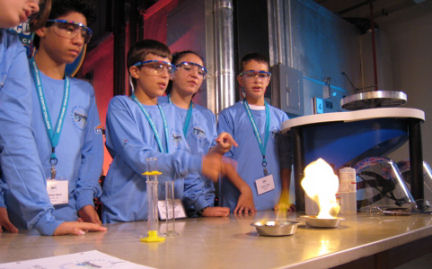 |
|
At DCYSC this year, students experimented with both fire (above) and ice (below). |
| Emily Sohn |
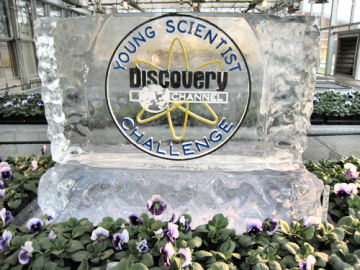 |
| Emily Sohn |
The science competition is now in its ninth year. Each fall, the DCYSC program staff selects 40 middle school science fair champs to come to Washington, D.C. Working in color-coded teams, students are judged on skills, such as teamwork, communication, and logical thinking.
Prizes include scholarships, trips to science camps, and visits to the sets of Discovery Channel TV programs. The highest-scoring student wins the coveted title of “America’s Top Young Scientist of the Year” and a $20,000 scholarship.
“Operation Green” was the theme of this year’s competition. Each activity challenged teams to consider environmental issues that the world faces today. That list of issues is long, says Steve Jacobs, head judge of DCYSC.
“We live on a traveling rock [that is] flying through space,” says Jacobs. “Our existence depends on a very thin layer of air.”
But our air has become increasingly polluted with emissions from motor vehicles and factories, as well as many other sources. These emissions contain carbon dioxide (CO2) and other greenhouse gases that trap heat and fuel global warming, which is helping change the world’s climate.
It’s up to the next generation of scientists to start solving problems caused by changing climate patterns around the world, Jacobs says.
Competition heats up
At this year’s competition, the challenges were designed to explore the connections between science, human actions, and environmental issues. The leaping-flame experiment, for example, helped show DCYSC participants the relationship between temperature, pressure, and wildfires.
Halfway through the experiment, the blue team was instructed to place a solid barrier around the flame.
“The flare will go out or get really, really small because there will be less oxygen in the container,” predicted team member Danielle Zapata, 14, of St. Gregory the Great in San Antonio, Texas.
But to the team’s surprise, the fire tornado grew even taller.
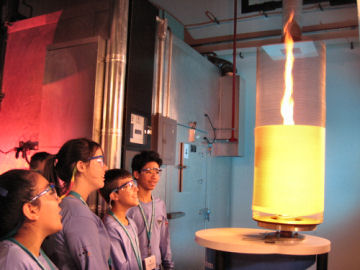 |
|
Members of the blue team were surprised to see their fire tornado grow even bigger when they placed a solid barrier around it. |
| Emily Sohn |
“That is like what’s happening in southern California right now,” explained challenge judge Rhonda Reis. She was referring to devastating wildfires that ripped through the state last month.
When barriers, such as trees, surround a fire, hot air rises almost vertically from the flames, causing the cooler air above to drop. The pressure change produces a wind that fuels the fires even more.
As part of the same challenge, called “The Hot & Cold of It,” students watched liquid nitrogen, which is already extremely cold, turn into a solid after just a small tweak in temperature.
Students also discovered that pumping air into a sealed plastic bottle increases the air pressure inside. As the pressure rose, they noticed that the temperature of the air also increased. The link between temperature and pressure is important because both factors drive storm systems and other weather patterns.
“Just a slight change in temperature can have dramatic effects” in the world, says Jacobs.
Meltdown
Though the fire tornado was one of the flashiest experiments in this year’s competition, other challenges held lessons that were just as important. And these experiments gave students a chance to get their hands dirty—and cold, and wet.
In a challenge called “Water, Water Everywhere,” for example, teams tried to figure out how greenhouse gases in the atmosphere might affect glaciers. To model this process, students were given polyvinyl chloride (PVC) piping and plastic wrap and told to build mini-greenhouses. Their goal was to compare how fast ice melted in two worlds: one with a low level of CO2 in the atmosphere, and one with a higher concentration of the greenhouse gas.
The purple team built two chambers. The students put a chunk of ice (to represent a glacier) in each container, but pumped CO2 into just one. Over time, the team noticed that the temperature rose higher and the ice melted faster in the CO2–filled environment.
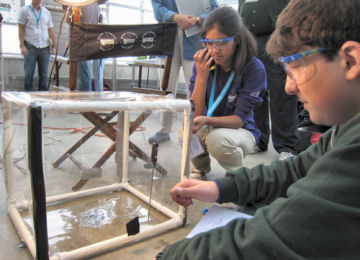 |
|
Purple-team members Rick Schaffer, 14, and Alyssa Chan, 13, watch ice melt in a high-CO2environment. |
| Emily Sohn |
Eating snow cones after the challenge, members of the purple team reflected on what they’d learned.
“This relates to the world today because there is more CO2 in the atmosphere,” said Ambrose Soehn, 14, of Summit Middle School in Boulder, Colo.
“That means [Earth’s glaciers] are in serious trouble,” added teammate Rick Schaffer, 14, of James Weldon Johnson Middle School in Jacksonville, Fla.
Watching ice melt, Rick added, is like “watching grass grow.” Still, his team’s critical-thinking skills helped the group win the Team Award and a science-based trip to Grand Teton National Park next summer.
From smashing trash to gassy cheeseburgers
Outside, the gray team was sorting through trash. The problem it faced was that landfill space for garbage is shrinking around the world. The team’s goal was to calculate the difference in density between a load of garbage before and after it had been compressed with a 40-ton machine called a hydraulic press.
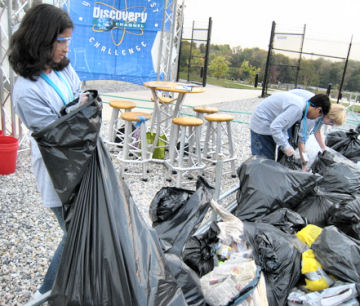 |
|
Gray team members get their hands dirty as they learn about shrinking space in the world’s landfills. |
| Emily Sohn |
While grappling with mathematical formulas and the concepts of mass and volume, the team learned that squeezing trash into a smaller space and recycling are two good solutions to the problem of shrinking landfills.
In another room, teams had to calculate the carbon footprint of a common object, such as a car, a fireplace, or a cheeseburger. First, they had to learn the meaning of carbon footprint: the amount of carbon dioxide and other greenhouse gases released during the production, use, and disposal of a product.
Then, they had to consider every step that goes into creating something like a burger, including emissions produced by trucks that carry lettuce and tomatoes from farms to fast-food restaurants.
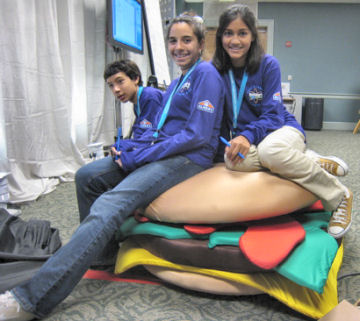 |
|
The purple team was surprised to discover that producing just one fast-food cheeseburger releases more than 8 pounds of carbon dioxide into the atmosphere. |
| Emily Sohn |
Other activities challenged students to think about the environmental consequences of architectural decisions, such as where windows are placed in a house and the energy savings earned by driving electric (instead of gasoline-powered) cars.
Lessons learned
At the end of the week, DCYSC participants were exhausted, exhilarated, and inspired to make the world a greener place.
At the awards ceremony, Elizabeth Marincola, president of Science Service (which helps organize DCYSC), encouraged participants to pursue answers to the many issues facing the world.
“For every problem that has been solved today,” she said, “There is an infinite number left for you to solve.”
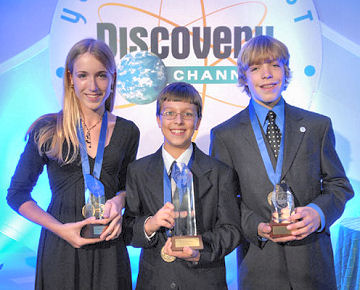 |
|
This year, Erik Gustafson, 11, (center) became the youngest person ever to win DCYSC. Katherine Strube, 14, (left) earned second place. Fourteen-year-old Ambrose Soehn took third place. |
|
Bill Fitzpatrick |
Top prize, a $20,000 scholarship, went to Erik Gustafson, 11, of Homer Intermediate School in Cortland, N.Y. He is the youngest participant ever to win the title of “America’s Top Young Scientist of the Year.”
Katherine Strube, 14, of Nipher Middle School in Glendale, Mo., won a $10,000 scholarship for second place. And third place, a $5,000 scholarship, went to Ambrose Soehn, 14, of Summit Middle School in Boulder, Colo.
At the awards ceremony, Bill Goodwyn, an executive at Discovery Communications in Silver Spring, Md., recognized the entire group for the insights they had gained during the week.
“We all need to live on a small planet in a responsible way,” Goodwyn said. Referring to the 40 DCYSC finalists and their passion for science, he added, “You’ve given us 40 new ways to think about a future living together.”
Going Deeper: